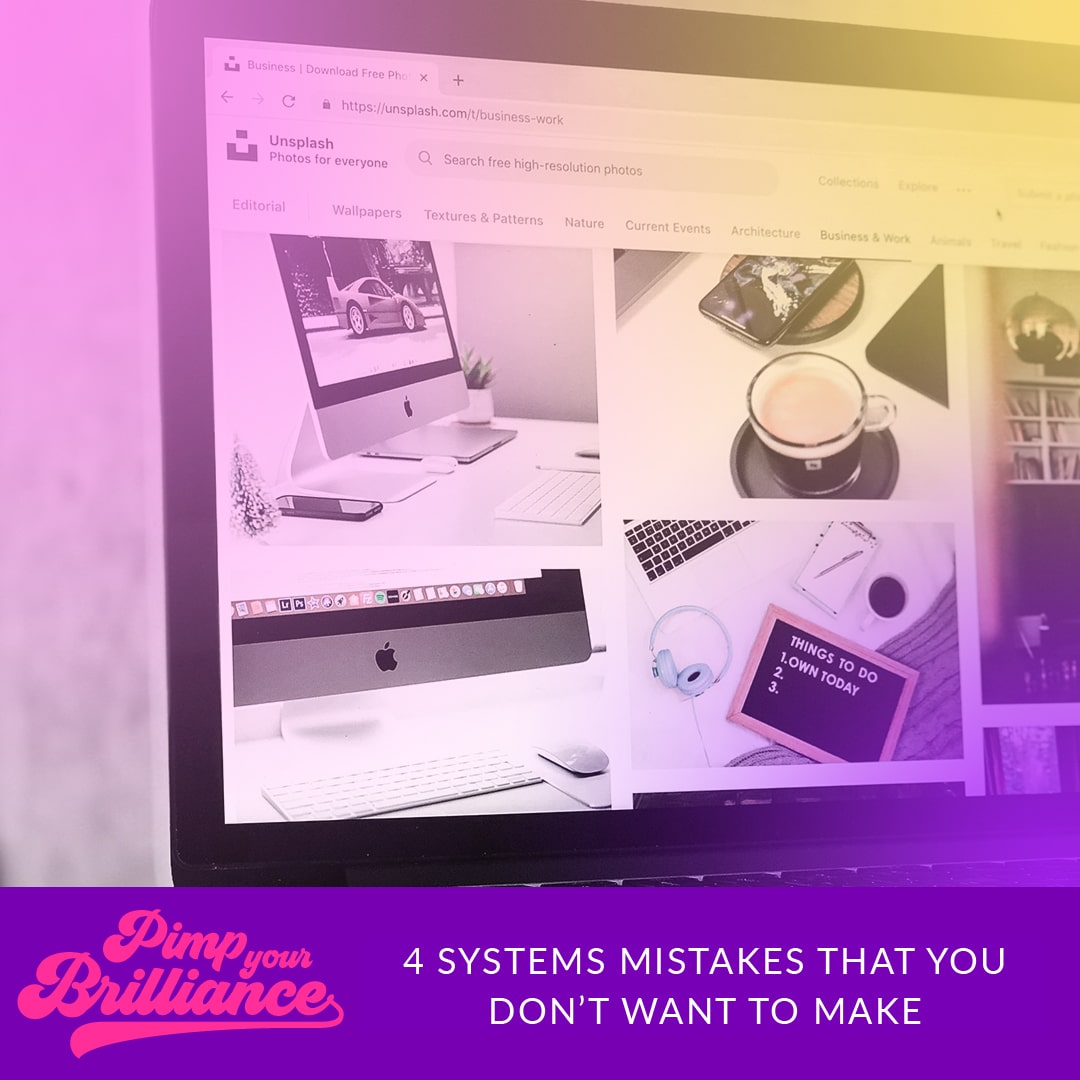
Recently on the podcast, I’ve talked about how to prepare your business for systems.
Today I’m sharing the top 4 systems mistakes that you don’t want to make. My goal is to help you bypass the common pitfalls and fast track your systems creation.
As a quick refresher, systems are your specific way of completing tasks in your business. So your systems cover how you create content, get new leads, and service customers. They are an essential but overlooked piece of the business pie.
4 systems mistakes that you don’t want to make
Now if you’ve already started creating your systems but feeling disappointed that they aren’t working, it’s probably because you’ve made one of these systems mistakes.
The first time I attempted to implement systems into my business and hire help, turned into a hot mess. I was expecting to have more time to focus on my business while working less instead I was stressed out. I didn’t have any processes and no clear idea of what I actually needed my virtual assistant to do.
Looking back on that experience, I realize that I made some variation of these systems mistakes.
Mistake #1 – Neglecting having systems all together
It doesn’t matter if you’re a solopreneur or a team of 100, your business needs systems even in stage 1. Set a solid foundation from the beginning by building out your systems consistently.
You don’t have to start with everything mapped out but having a process for how you handle the most frequent tasks in your business is essential.
As your business grows and evolves, you’ll make updates to your system. This is an ongoing process for every business.
Burying your head in the sand and neglecting your systems will stifle your growth.
Mistake #2 – Setting up the wrong systems
How many times have you heard about a system someone else uses in their business to get great results and blindly copied it? A few times at least.
In the early stages of business, it’s easy to make this mistake because you’re still figuring out what works.
Every business is different. So your systems are going to be influenced by the type of business you have and your business model. That’s means the systems that work for someone else might not work for you.
A product based business does not have the same systems needs as a service based business. If you don’t take the time to evaluate your business needs, you could end up with a bunch of systems that don’t serve you or the business that you’d like to build.
There’s nothing wrong with using someone else’s systems as a starting point, but make sure you tweak it to fit your business,
Mistakes #3 – Putting tools before the system
Tinkering with new tools and software can be fun but you need the system first.
It’s like putting together a piece of Ikea furniture, if you want to do it the easy way you start on step 1 and follow the directions. You can start on step 5 and have some success but you’ll notice quickly the pieces don’t quite line up.
Don’t skip steps. Write out the process. Once you’re done, it’s easier to see how and where a tool can complement the system. Trying to automate before you have a system in place wastes time and money.
Mistake #4 – Not following the system
This is the most common and easiest to fix mistake.
You spent the time documenting your process and setting up your project management system but refuse to use it when going through the process. Why?
It’s not enough to create the systems for your business, you actually have to use them. Using your systems ensures that the quality of work is maintained every time.
Not using your systems can cause them to become outdated. This becomes a classic case of if you don’t use it you lose it. Imagine not following your systems for six months. In that time your tools can develop new features that you haven’t documented.
Even though you’ve completed the process hundreds of times, it’s still best practice to follow the system. Over time this helps you fill gaps, streamline the steps, and keeps your systems up to date.
If you’ve set up systems in your business and you aren’t seeing the expected results, it’s likely that you’ve made one of these systems mistakes. Don’t fret. These mistakes are fairly common.
Go through the different areas of your business and see if you can identify which mistake you made. Then, make a plan of action to fix it.
